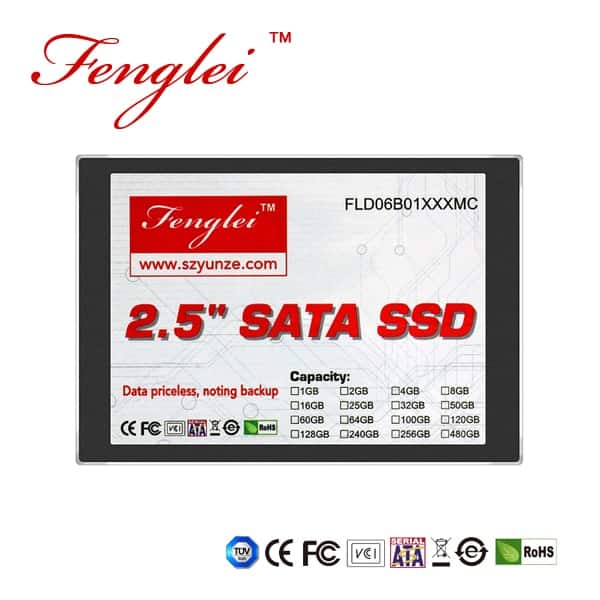① Introduction
In today’s fast-paced digital world, data storage and retrieval have become integral aspects of our lives. Solid-state drives (SSDs) and USB drives have emerged as two popular options, both employing flash memory technology. However, you might be wondering why USB drives, even with their flash memory, can’t match the speed of SSDs. In this article, we’ll delve into the key differences between solid-state drives and USB drives, shedding light on why SSDs outpace their USB counterparts.
② Solid-State Drives: The Need for Speed


Solid-state drives utilize a unique algorithm encapsulated within their main control chip, a feature that sets them apart from USB drives. This algorithm excels at evenly distributing data across every flash memory chip in the SSD, leading to improved speed and significantly extending the lifespan of the flash memory. In essence, more efficient algorithms enhance high-speed data compression and reading, achieving remarkable read speeds. Under typical use, a solid-state drive can endure for four to five years without issues.
⑴ Lifespan Extension
One of the most significant distinctions between SSDs and USB drives is the remarkable lifespan extension offered by SSDs. Counterfeit USB drives often consist of a single flash chip or, at most, two. Such drives frequently experience chip aging due to repeated access to the same storage structure units on a single chip. In contrast, SSDs boast numerous chips, sometimes dozens of them. The main control orchestrates data distribution across different chips, effectively balancing their usage and significantly extending their operational lifespan.
⑵ Simultaneous Read and Write
When copying files between a hard drive and a USB drive, you might notice slower speeds compared to individual file transfers. This slowdown is due to the limitations of flash memory chips, which can only perform a single read or write operation on the same storage unit structure at the same time. The process relies on voltage changes to complete, necessitating different voltages for reading and writing. SSDs, thanks to their multiple chips and efficient data distribution, can perform simultaneous reading and writing, a feat USB drives can’t match.
⑶ Quality of Particles and Chips
Counterfeit USB drives are prevalent, primarily because they are easier to create. To make a fake USB drive, one can purchase a counterfeit main control chip online, add a polished flash chip, solder them together, and flash the control. Creating an SSD, on the other hand, demands substantial research and development capabilities. The SSD’s main control chip manages multiple chip reading and writing, data cache, and the coordination of simultaneous reading and writing across various channels.
③ Different Main Control Chips
While both USB drives and solid-state drives share a similar structural principle – a main control chip and flash memory chips – their main control chips differ significantly. USB drives employ a simplified version, omitting the SATA controller but retaining controllers common to mobile devices like ZIF (CE), eSATA, and USB. These controllers have limited addressing capability, controlling a maximum of only 8 flash memory chips.
In contrast, solid-state drive main control chips support a broader range, ranging from 16 to 32 or even more flash memory chips. A general rule of thumb is that larger capacities equate to faster performance. A single main control chip manages the simultaneous read and write operations of 16 or 32 flash memory chips, mirroring the concept of arrays in mechanical hard drives.
④ Conclusion
In conclusion, both USB drives and solid-state drives employ flash memory technology, yet there are notable differences in their main control algorithms, lifespan extension, and simultaneous read and write capabilities. Solid-state drives, with their advanced algorithms and efficient chip coordination, surpass USB drives in terms of speed and durability.
⑤ Frequently Asked Questions
Q1. Are USB drives and SSDs interchangeable in terms of performance?
No, USB drives and SSDs have distinct performance characteristics due to differences in main control algorithms and chip coordination.
Q2. Can USB drives be as durable as SSDs?
USB drives typically have a shorter lifespan compared to SSDs because of their simpler chip structure.
Q3. Is it worth investing in an SSD for enhanced speed and performance?
If you prioritize speed and longevity, investing in an SSD is a wise decision, especially for tasks that involve frequent data access.
Q4. How can I identify a counterfeit USB drive?
Counterfeit USB drives are often simpler in design and lack the features and quality of genuine ones. It’s essential to purchase USB drives from reputable sources.
Q5. What should I consider when choosing between a USB drive and an SSD?
Consider your specific needs. If you need a portable, small-capacity storage solution, a USB drive is suitable. However, for high-speed, long-lasting performance, an SSD is the better choice.
Related:
- Key Etching Gas Requirements in Semiconductor Process
- Why Thunderbolt 4 Outshines Standard Type-C?
- SSD Performance: The Parameter You Need to Know
- Understanding Soldering Defects in Solder Paste Process

Disclaimer: This article is created by the original author. The content of the article represents their personal opinions. Our reposting is for sharing and discussion purposes only and does not imply our endorsement or agreement. If you have any objections, please contact us through the provided channels.



